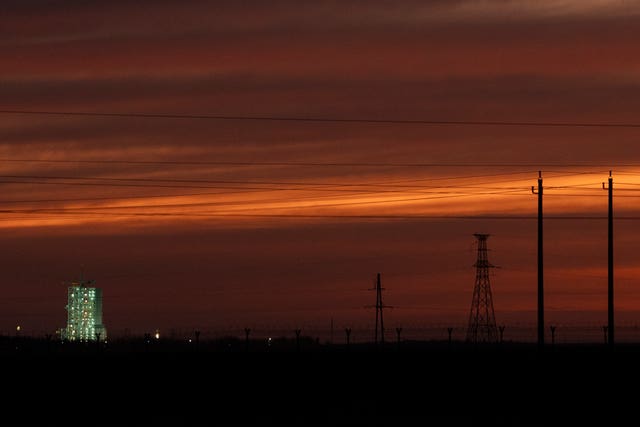China said all systems are ready to launch the next crew to its orbiting space station early on Wednesday, the latest mission to make the country a major space power.
The two men and one woman will replace the astronauts who have lived on the Tiangong space station for the last six months.
The new mission commander, Cai Xuzhe, went to space in the Shenzhou-14 mission in 2022, while the other two, Song Lingdong and Wang Haoze, are first-time space travellers both born in the 1990s.
Mr Song was an air force pilot and Ms Wang an engineer with the China Aerospace Science and Technology Corporation who will be the crew’s payload specialist. Ms Wang will be the third Chinese woman aboard a crewed mission.

The Shenzhou-19 spaceship carrying the trio is due to launch from the Jiuquan Satellite Launch Centre in northwest China atop a Long March-2F rocket, the backbone of China’s crewed space missions.
Launch time is set for 4.27am, according to the space agency’s spokesperson, Lin Xiqiang.
China built its own space station after being excluded from the International Space Station, largely due to the United States’ concerns over the programme’s complete control by the People’s Liberation Army, the Chinese Communist Party’s military arm.
Besides putting a space station into orbit, the space agency has landed an explorer on Mars.
It aims to put a person on the moon before 2030, which would make China the second nation after the United States to do so. It also plans to build a research station on the moon.
The moon programme is part of a growing rivalry with the US – still the leader in space exploration – and others, including Japan and India.
America is planning to land astronauts on the moon for the first time in more than 50 years, though NASA pushed the target date back to 2026 earlier this year.
During the upcoming mission, the space station will receive resupplies from an uncrewed craft, aiding them in performing space walks and replacing and installing equipment to protect the Tiangong station from space debris, some of which was created by China.
According to Nasa, large pieces of debris have been created by “satellite explosions and collisions”.
China’s firing of a rocket to destroy a redundant weather satellite in 2007 and the “accidental collision of American and Russian communications satellites in 2009 greatly increased the amount of large debris in orbit,” it said.
The Shenzhou-19 astronauts will complete in-orbit rotation with the Shenzhou-18 trio and stay at the space station for approximately six months, witnessing the arrival of the Tianzhou-8 cargo craft and Shenzhou-20 crewed spaceship during the mission.
Many tasks await the new crew: conducting space science and application tests, performing extravehicular activities, installing protective devices against space debris, and installing and recycling extravehicular payloads and equipment.






